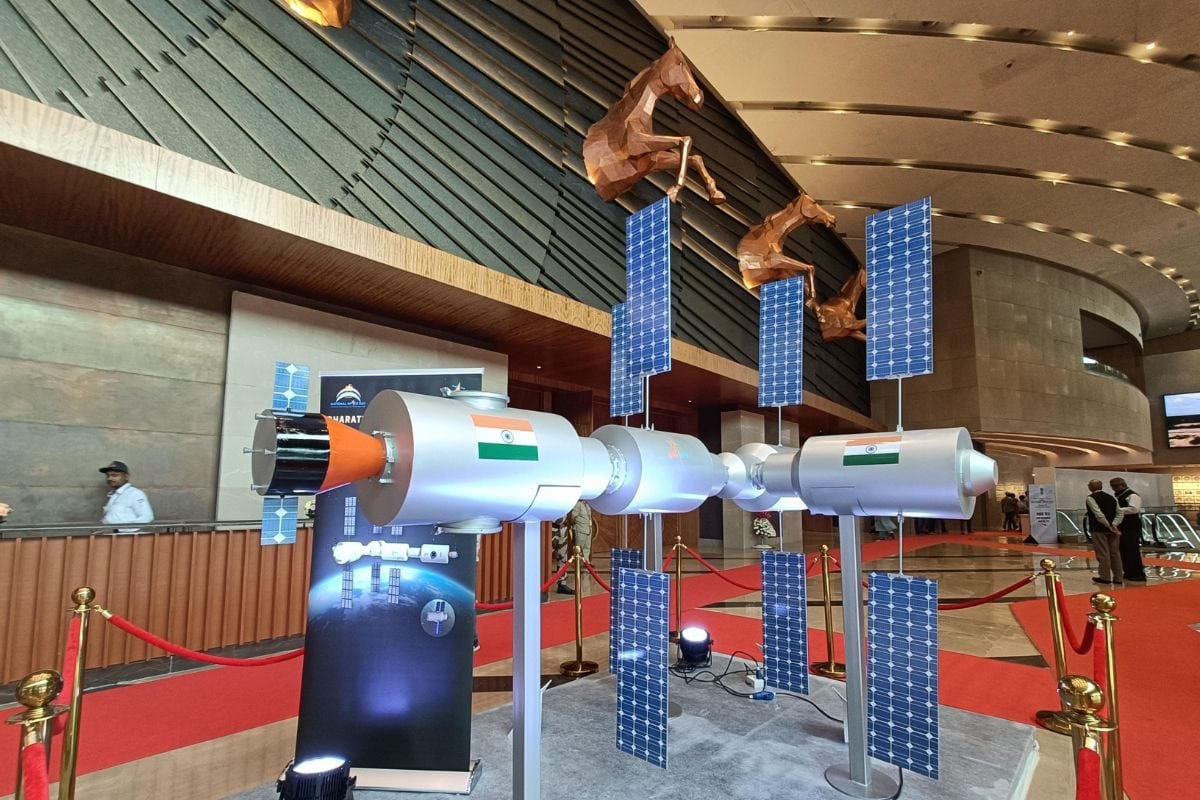The Space Station will have five different modules (upto 10 tonnes) which will be flown into space by the next-generation rocket Soorya, and eventually dock as one complete unit by 2035
The Bharatiya Antariksh Station will have as many as five modules, and the first base module will be launched by the Indian Space Research Organization (ISRO) by 2028, said chief S Somanath. The entire station with mass of about 52-tonne is likely to be completely assembled in space by 2035.
The first module with a mass of around 9186 kg will not have any human re-entry capabilities, and will be robotic. “This will be the smallest of all the five modules, which can fit into our current rocket LVM Mk-3. Once it is launched, then we will take the next few years to build the rest of the bigger modules. Our plan is to have as many as five modules – all of which will then dock in space,” said the ISRO chairman, on the sidelines of the National Space Day in New Delhi.
ISRO is also in the process of building a new generation rocket – Soorya – to lift off the heavier modules. It will have two times more capability than the current heaviest rocket – LVM Mk-3 which can lift maximum 4-tonne class satellites to Geosynchronous Orbit, and 10 tonnes to Low Earth Orbit (LEO). India has set a timeline for 2035 to assemble the entire space station in a phased manner – which will then host 3-4 astronauts for varying time periods to conduct several experiments in space.
“Space stations are supported through international co-operation. We have been participating in the International Space Station, so we hope that when we build our station, then other countries will also participate and have joint missions,” he added.
CHANDRAYAAN-3 TO COLLECT LUNAR SAMPLES BY 2027
ISRO also has its eyes on the Moon with the next phase of Chandrayaan likely to be launched by 2027 to collect and bring back lunar samples. It will also demonstrate agency’s space-docking capabilities.
“This mission requires different technologies that can enable us to escape the gravity of the moon, orbit around it, and then re-enter the Earth without getting burnt off. This is very challenging. But we need to develop this capability if we have to send a man to the Moon by 2040,” said the ISRO chairman.
Marking the first anniversary of its historic landing near the South Pole of the moon, ISRO also made the data collected from the Chandrayaan-3 mission available to the public. Space researchers from across the world can download and access it from the agency website.
“There are still fundamental questions on the moon’s origin, and whether it will give some clues on the creation of Earth itself. Also, can we create a habitable space on the lunar surface? We have been trying to understand various aspects, and Chandrayaan-3 team has made new findings which show the kind of volcanic activity that has happened on the moon,” he added.
The space agency also declared a statement on ‘Zero Debris Mission’, and urged other countries to follow. “We have to keep launching satellites, but we have also decided that we will not litter space. So, once the satellites stop functioning, we will bring them to Earth, and ensure there is no collision or explosion in space,” he added.

